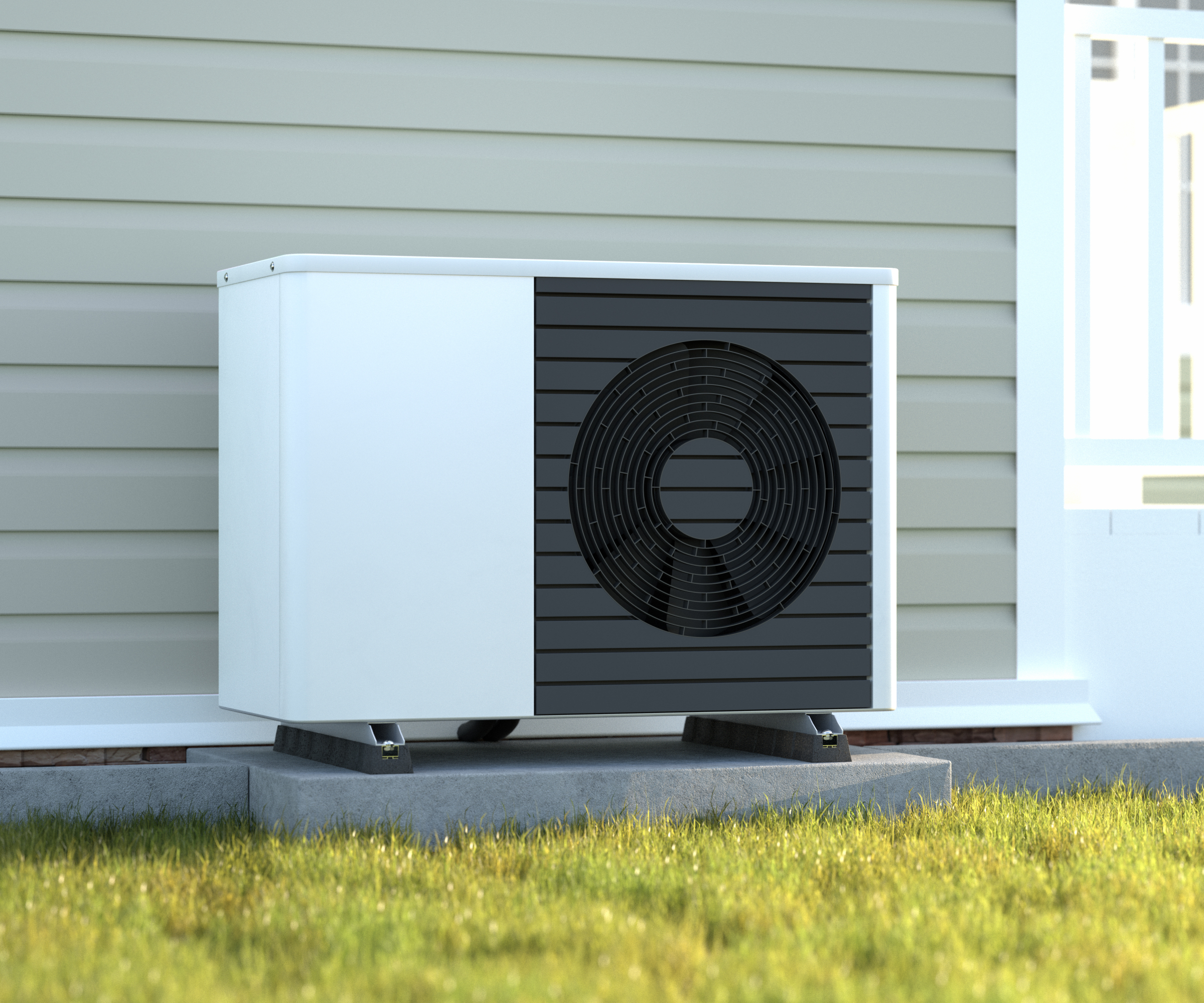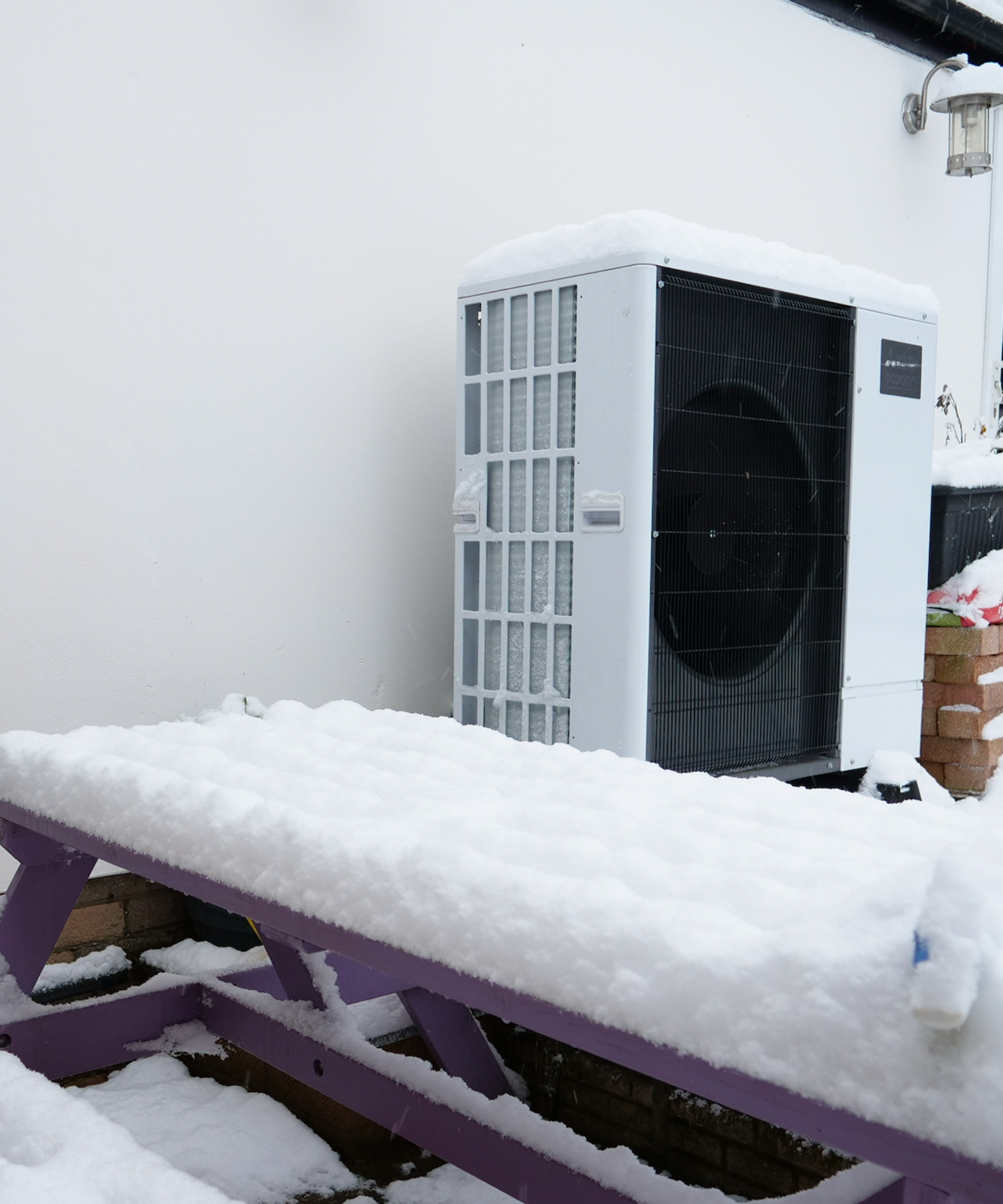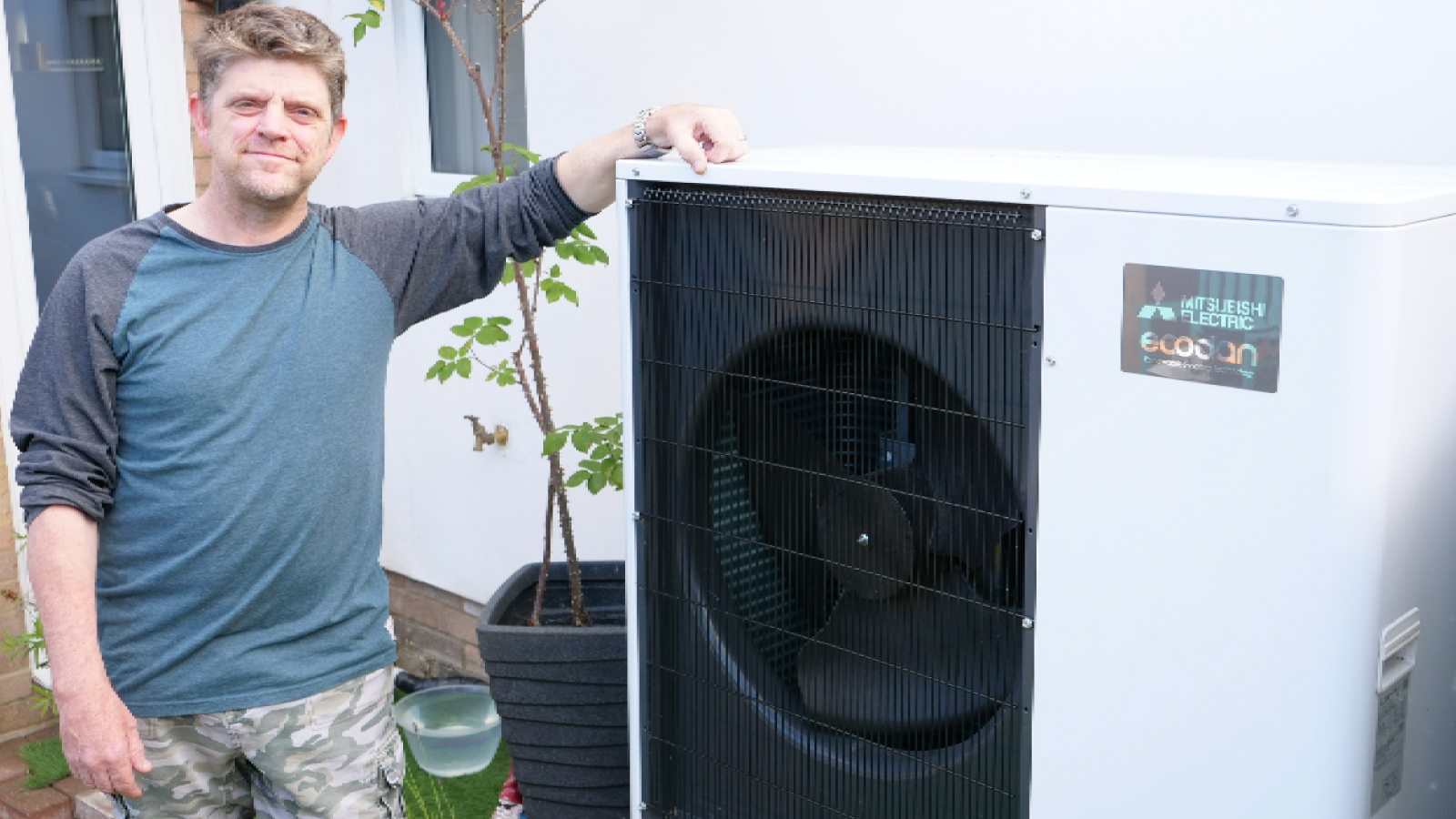Homebuilding Verdict
While the unit has worked well overall and as expected, as a self-confessed tech enthusiast it is fairly simple in design and I would have liked more scope to be able to alter some of the deeper controls – without needing to be a rocket scientist. However, the back up service from Mitsubishi has been excellent and I would definitely consider using the company again.
Pros
- +
Quiet
- +
Robustly built
- +
Good service
Cons
- -
Can't integrate with third party home controls
- -
Basic system
You can trust Homebuilding & Renovating.
When my family moved into our current home, which was originally built around 1988, it had an oil heating system, electric storage heaters and a wet radiator system that had been retrofitted into the property in 2004 by previous owners.
However, when we decided to extend the property we were faced with a decision as the oil boiler pipework and flue were sited where the new lounge would be. Either the oil boiler needed to move or an alternative heating solution had to be considered.
Given the age of the boiler and the awkward position of the oil tank, we decided to explore fitting air source heat pumps (ASHP) and chose a Mitsubishi Ecodan 11.2kw R410a monobloc heat pump.
Although the one we fitted is now two generations old and operates using an older refrigerant – R410a – the new updated model, the Ecodan R32 is still very similar in its size, look and operation to the one I have.
First impressions
The unit we chose is classed as a monobloc heat pump. ASHPs are not traditionally pretty things to look at and ours, albeit a cream colour that slightly blends with the wall, is a big unit and takes the space of about three wheelie bins. It also needs free space of around one to two metres in front of it to allow for air movement.
The ASHP extracts heat from air that is drawn in through a heat exchanger by a fan. This action has a sound implication, albeit this unit is still surprisingly quiet despite its age. We have never heard it, even though it is only around two metres from habitable rooms.
Installation
Prior to install, remember that ASHP units in theory need planning permission, but can usually be installed under permitted development, if all the conditions and sound calculations are met. However, it is always advisable to check with your local authority before proceeding.
Bring your dream home to life with expert advice, how to guides and design inspiration. Sign up for our newsletter and get two free tickets to a Homebuilding & Renovating Show near you.
To find out more you can also check the planning portal for the latest information.
You will also need permission from the Distribution Network Operator (DNO) to electrically connect the heat pump. Some installers do this application for you but often it is left to the homeowner to complete.
Installation and connection
With air source heat pump installation, the positioning is important. The outdoor fan unit needs to sit on a firm base. We had to build a brick base with two concrete slabs on top, as well as drainage for the condensation that is produced by the unit before it was installed. Between 70 litres and 120 litres of condensation can be produced per day so this needs to be managed to prevent it from saturating the surrounding area or becoming a slip hazard in colder weather.
I built my own base and it needed a small foundation as it was on grass. Concrete slabs might also have been acceptable if the ground was properly compacted.
If you are using the ASHP for hot water preparation then you will also need a hot water cylinder. Our oil boiler was a combi unit so we had no hot water cylinder and therefore had to plan a space for this to be added.
Up until now, a hot water cylinder that is designed for a boiler has not been compatible with a heat pump, but some of the new R290 refrigerant units can be used with some indirect cylinders. Check with your installer to see what options are available.
When the unit arrived, the packaging was all cardboard including the compacted base. It was easy enough to unpack the boxing from around the unit but the fan unit needed four people to carry it comfortably. There were four handles recessed into the case but a set of straps carefully fed under the unit also helped with the safe lifting and shifting.
In terms of timing, our installation took around 4 days, but good planning meant we were only without hot water for less than a day.

Connection to heating system
Connecting the ASHP unit and water cylinder to the existing central heating and hot water distribution took some additional pipework and disruption.
Routes had to be found for the pipework and insulation as well as the electrical supply and controls wiring. It was certainly not a ‘kit’ installation but the installer supplied all the additional materials and had all the plumbing and electrical competencies within the installation team to complete the job.
Our extension has underfloor heating and the rest of the home is on radiators. The installer did a room by room heat loss calculation before starting the installation so that all the emitters in each room could be carefully sized according to the room heat loss and the flow temperature of the heat pump.
We were fortunate that only two radiators needed to be replaced as the rest were all suitable for the heat pump design configuration.
A heat pump can work with radiators, hydronic fan convectors or underfloor heating, so as long as they have been designed for the lower flow temperatures and have also been balanced for a much smaller difference between the flow temperature and the return temperature in the heating system (than you would expect in a boiler driven system), there's no reason why the system won't work.
We were also fortunate that all the central heating pipework was already made up of copper 22mm and 15mm pipes. Small bore pipes such as 8mm and 10mm can be a limiting factor when installing an ASHP as they often cannot transfer enough energy in the water without an increase in noise, or a drop in efficiency, or both.
Performance
At the time I had it installed, the Mitsubishi Ecodan was the biggest selling ASHP in England. As such the performance was around where I expected it to be. That said, the performance was not at the headline figures that are thrown around on social media. But to my mind, they were in the range expected when you took into account the flow temperature, temperature difference and the ambient temperature.
It's important to note there is also a difference between the calculated efficiency and the metered efficiency. I had a Metering and Monitoring Service Package (MMSP) fitted which meters the heat generated and the electricity used so that you can get a far better idea of the Coefficient of Performance (COP) rating which works on the basis that the higher the reading, the more efficient the heat pump is.
To be honest, I felt that the materials supplied for this were rather sub-standard. The sensors did not fit in the pockets provided and the fittings provided were exactly what the manufacturer said should not be used. However, the MMSP at least gives some indication of heat delivered and electricity used in the actual home - rather than a formulaic guestimate – which is all you will get with calculated efficiency.
The heating and hot water is not measured separately and the COP on average over the past five years is just under three. However, this does include periods where I was playing with settings to see how they worked – rather than concentrating on optimising performance.

Impact on heating bills
At the time when we decided to install the ASHP the alternative fuel option – oil – was very cheap. Electricity was less so, so the initial running cost of the system was higher than oil.
However, after we got used to the ASHP system and started to understand how it reacted to heating demand and environmental conditions, we were able to adjust things more effectively.
We also had to realise that we used to buy oil once a year in one lump sum and now all the heating, cooking, lighting, games consoles and other electrical appliances were all bundled into one big bill, so while one number dropped, another increased. But, over time we have learnt to adjust.
Environmental friendliness
The heat pump that I have is now two generations old even though it has only been in for around five years.
However, this means that it is already using refrigerant that is considered less environmentally friendly than newer editions. The Mitsubishi Ecodan 11.2kw heat pump uses R410a, which was replaced by R32 due to lower Global Warming Potential (GWP), but even that is also now in the process of being replaced with R290, which has an even lower GWP.
Costs
The Boiler Upgrade Scheme (BUS) has muddied the water on heat pump and air source heat pump costs in general. The scheme pays £7500 towards the cost of the installation of the heat pump, but this can unfortunately lead to price increases from some suppliers.
The cost you pay will depend on a number of things such as how many radiators are changed, how much pipework is changed, what extras you need such as a heat pump base, making good where interior finishes have been disrupted and the distance that the pipework needs to cover.
An air source heat pump will usually cost between £6000 and £14,000 (less the £7500) but with disruptive remedial work, could end up costing you around £30,000 as a full project cost.
To benefit from the BUS, the installation must also be completed by a registered Microgeneration Certification Scheme (MCS) installer, meaning the option to buy the equipment and install it yourself as a way of saving costs is currently not very viable.
Would I buy it again?
I hope to get at least around 15 years from the unit, and even though R410a is being phased out by reducing the amount of the gas available each year for sale, (the gas can still be purchased for maintenance purposes), the only time that mine would be redundant is if R410a was completely banned.
Historically other gasses have taken over 20 years before the gas was completely banned from date of restriction. That gives me another 10 to 15 years, which is over the expected lifespan of the unit. Compressors are often guaranteed for 10 years but have a life expectancy of 15 years.
If I was buying again, I would look at the same pump that operates using the R290 refrigerant. Even though it can be slightly less efficient and it is slightly trickier to install due to the fact that it is highly flammable. This means the process needs to be managed extremely safely in the highly unlikely event of a leak. it should be noted that there is a tiny volume of the gas in the unit – around 20 times less than some BBQ gas bottles.
David is a renewables and ventilation installer, with over 35 years experience, and is a long-standing contributor to Homebuilding and Renovating magazine. He is a member of the Gas Safe Register, has a Masters degree in Sustainable Architecture, and is an authority in sustainable building and energy efficiency, with extensive knowledge in building fabrics, heat recovery ventilation, renewables, and also conventional heating systems. He is also a speaker at the Homebuilding & Renovating Show.
Passionate about healthy, efficient homes, he is director of Heat and Energy Ltd. He works with architects, builders, self builders and renovators, and designs and project manages the installation of ventilation and heating systems to achieve the most energy efficient and cost effective outcome for every home.

